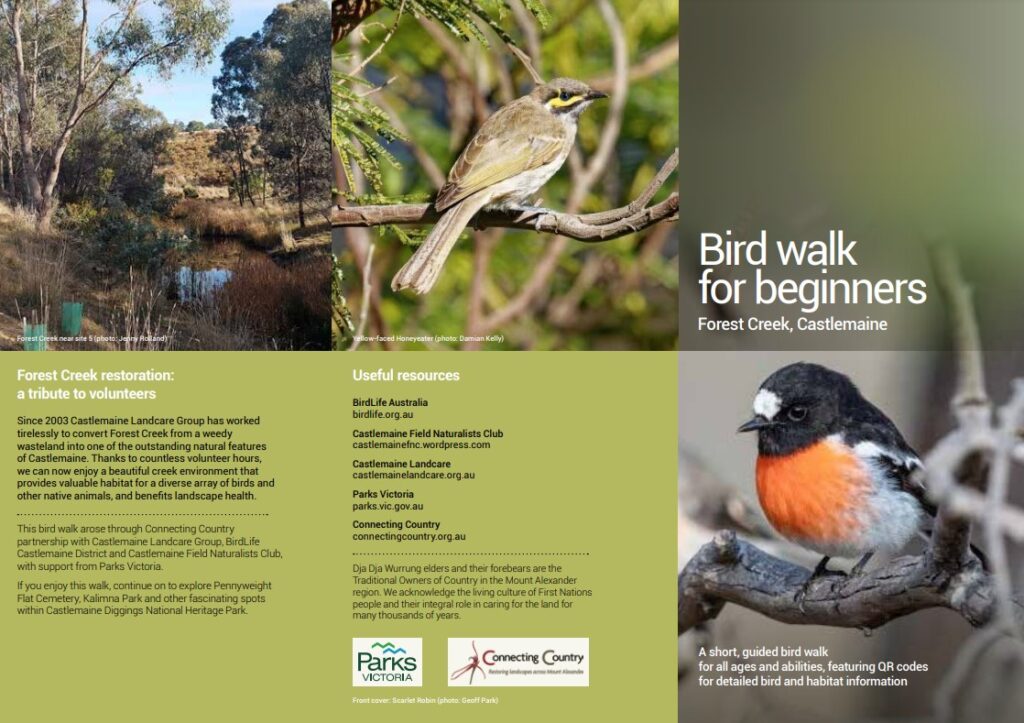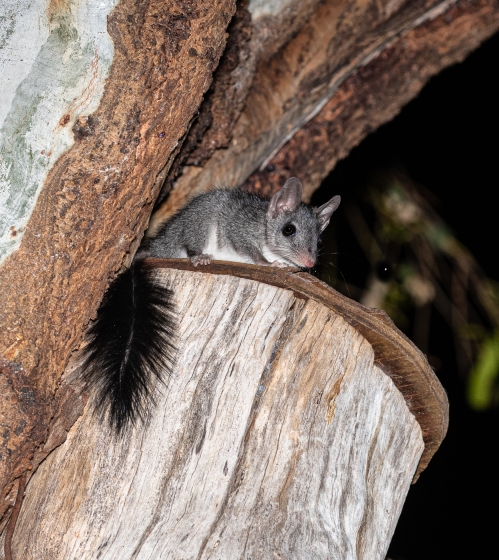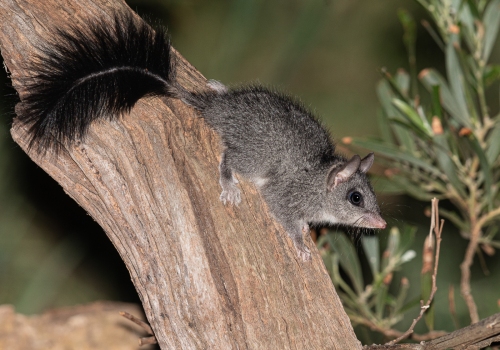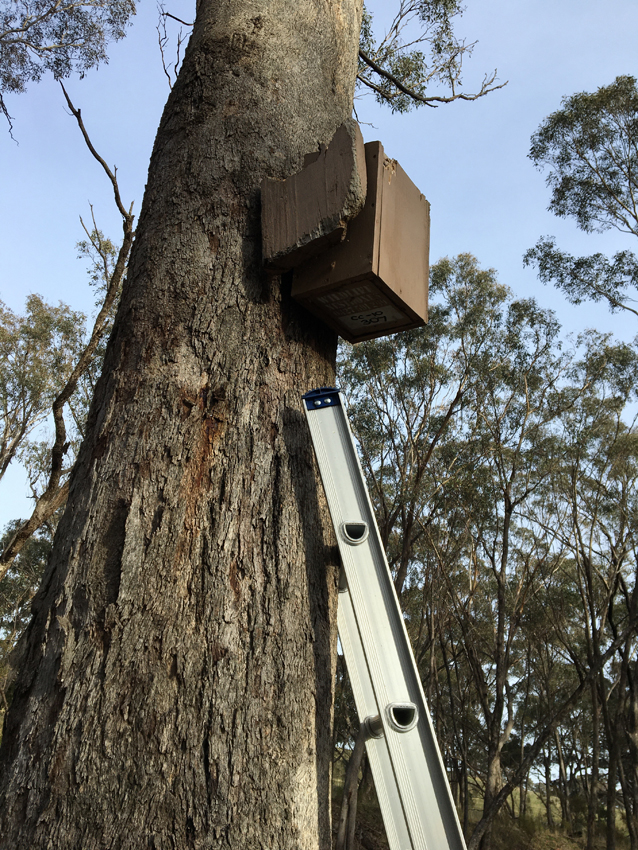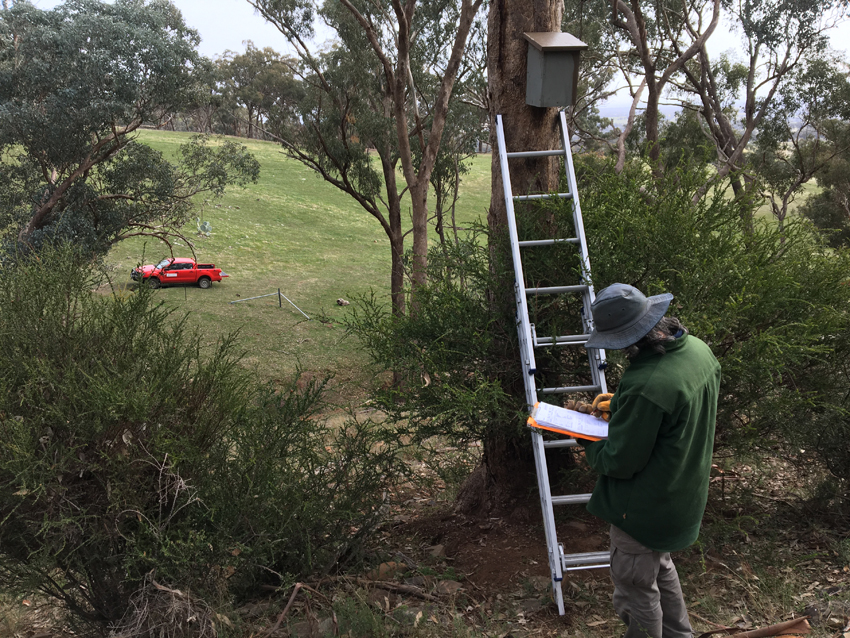Landcare Link-up event – getting to know Connecting Country
Posted on 26 May, 2022 by Hadley Cole
 We are hosting a Landcare Link-up event for Landcarers of the Mount Alexander region with the theme Getting to know Connecting Country. Landcare group and friends group members come along and join us and learn more about the work Connecting Country does. It is also a wonderful opportunity to get together with neighbouring Landcarers in the region.
We are hosting a Landcare Link-up event for Landcarers of the Mount Alexander region with the theme Getting to know Connecting Country. Landcare group and friends group members come along and join us and learn more about the work Connecting Country does. It is also a wonderful opportunity to get together with neighbouring Landcarers in the region.
When: Thursday 2 June 2022 from 6.00-8.00 pm
Where: Chewton Town Hall, 141 Main Rd, Chewton VIC
We will also hold a Landcare open mic session where you can have your say about Landcare in the region. A soup supper will be provided.
Please register your attendance via the following link before 5.00 pm on Sunday 29 May 2022:
https://www.trybooking.com/BZOGF

For more information please contact hadley@connectingcountry.org.au
We look forward to seeing you there!
Wheel Cactus community field day – Sunday 29 May 2022
Posted on 25 May, 2022 by Ivan
Old and new volunteers alike are invited to Tarrangower Cactus Control Group’s next Community Field Day on Sunday 29 May 2022 near Maldon VIC. Read on for more details from our friends the Cactus Warriors.
Cactus killers wanted!
Tarrangower Cactus Control Group will launch its 2022 season with a community field day.
Where: Near the corner of Watersons and Tarrengower School Roads. Tarrengower VIC
When: From 10.30 am to 12.30 pm pm Sunday 29 May 2022
Come along, enjoy the fresh air, kill some cactus and then join us for a free cuppa and sausage sizzle. Everyone is welcome.
The Tarrangower Cactus Control Group Inc. (TCCG) consists of Landcare volunteers dedicated to the eradication of Wheel Cactus (Opuntia robusta). TCCG, in conjunction with Parks Victoria, holds friendly and informal Wheel Cactus Control community field days to inform and demonstrate control techniques, on the last Sunday of the month from May to October. These field days always end with a free BBQ lunch, cuppa and cake and the opportunity to chat, exchange ideas and make contacts. It is a great opportunity to spend a rewarding morning outdoors, meeting neighbours and others who are concerned about preserving our unique environment. Everyone is welcome, no previous experience is required and all equipment is supplied. View the video below to catch the ‘cactus warriors’ in action.
For more information visit www.cactuswarriors.org
North Central CMA Regional Roundtable in Campbells Creek – 15 June 2022
Posted on 25 May, 2022 by Ivan
Do you have an interest in the management of our local waterways and broader landscape? Here is your chance to be involved with the North Central Catchment Management Authority’s (CMA) regional roundtable engagement. Connecting Country has partnered with North Central CMA on many projects and has recently delivered property assessments on thier behalf. The regional round tables are a great way to learn more about the next decade of environmental planning and restoration and how you can be part of it. Connecting Country will be attending and we encourage local groups and individuals to come along and discuss local environmental priorities.
Please read on for details, courtesy of the North Central CMA website.
NCCMA Regional Roundtable in Campbells Creek
When: Wednesday, 15 June 2022 –5:45 pm to 8:00 pm
Where: Campbells Creek Community Centre, 60 Elizabeth St, Campbells Creek VIC
Cost: Free
RSVP for dinner by 10 June 2022 on info@nccma.vic.gov.au or (03) 5448 7124
Do you live or work in Macedon Ranges Shire, Hepburn Shire, Mount Alexander Shire or the City of Greater Bendigo?
Are you interested in Natural Resource Management?
If so, come along to our next Regional Roundtable where you can:
- Hear about current projects in your local area from the organisations involved.
- Discuss local environmental priorities.
- Identify opportunities to work together in the future.

Former North Central CMA staff member, Ian Higgins, engaging with the next generation (photo: North Central CMA)
Benefits of ecological burns: webinar recording available
Posted on 19 May, 2022 by Ivan
If you missed the recent webinar on ‘The benefits of ecological burning’, you can now find it online to watch its entirety via YouTube. Ecological planned burning is a land management tool applied to promote positive benefits for a local environment, and certainly has its place in sustainable land management if implemented with appropriate skill and knowledge.
The webinar was delivered and recorded online on 8 March 2022, courtesy of the Macedon Ranges Shire Council as part of their larger ‘Healthy Landscapes’ project. The webinar explored how ecological burning is approached by local government and how this can be applied to other contexts. This well-attended event and was well received in the community.
Ecological burns – the benefits
These benefits include stimulating dormant seed banks in the soil profile, reducing the vigour or eliminating weeds, nutrient cycling and the removal of biomass….all of which promote biodiversity and ecosystem health. There are a range of factors that influence when and how an ecological planned burn can be conducted, but essential to the process is a clear understanding of what you are trying to achieve and how to moderate fire behaviour and extent.
Healthy Landscapes project
The Healthy Landscapes: Practical Regenerative Agricultural Communities project aims to raise awareness in their community about sustainable land management practices that improve soil health, reduce exposure to climate risk, enhance biodiversity and increase on-farm productivity. It is being delivered as a partnership between Macedon Ranges Shire Council, Hepburn Shire Council, the City of Greater Bendigo, A Healthy Coliban Catchment project (North Central Catchment Management Authority and Coliban Water), Melbourne Water and the Upper Campaspe Landcare Network.
Intrepid Landcare take a walk at Leanganook 15 May 2022
Posted on 9 May, 2022 by Hadley Cole
Intrepid Landcare – Mount Alexander region is a local group for 18 – 35 year olds looking to connect with Country and care for our environment here in central Victoria. Their monthly activities include working bees, educational sessions, nature walks and outdoor adventures.
Join Intrepid Landcare on Sunday 15 May 2022 for an informal walk up on Leanganook (Mount Alexander) from Leanganook Picnic Ground to Dog Rocks. We’ll meet near the toilet block at 11.00 am. BYO picnic lunch and thermos if you’d like to stay for lunch afterwards. No RSVP is needed.
If you like birding, bring your binoculars!
Be sure to dress warmly and wear sturdy walking shoes, the rocks on the Mount can be very slippery. Here is a photo from our walk up there in 2019, where we scored bonus snow!
Leanganook is a beautiful and culturally important place. Here’s a great video with Uncle Trent Nelson sharing insights about its significance from Djaara perspective: click here
|
High above the ground stands Leanganook or Mount Alexander which means ‘his teeth’. We learn of the cultural significance of this place from Dja Dja Wurrung …
youtu.be
|
If you have any questions, text or call Asha on 0418 428 721 or email intrepidlandcaremar@gmail.com.
As with all Intrepid Landcare activities, this is a COVID-safe event. All attendees are asked to be fully vaccinated and follow any current COVID-19 restrictions. This is a child-friendly event, noting that kids must be under parent/carer supervision at all times.
Research confirms: planting brings back woodland birds
Posted on 4 May, 2022 by Frances
Connecting Country works with landholders and community groups to restore landscapes across the Mount Alexander region of central Victoria, with a focus on restoring habitat for woodland birds on both public and private land. Our key actions include fencing to protect remnant vegetation, changing grazing regimes, controlling pest plants and animals, planting revegetation and nurturing natural regeneration.
We focus on restoring woodlands and degraded landscapes for the benefit of our woodland birds and other wildlife. Through Connecting Country’s long-term bird monitoring program, we have a solid database that allows us to assess changes in woodland bird populations over time. Analysis indicates that our landscape restoration efforts are having a positive impact on woodland birds.
We were heartened to recently discover some robust scientific research that supports our observations: revegetation with suitable indigenous plants really does bring back woodland birds! The new research was published in the Journal of Applied Ecology, and shows planting trees and shrubs brings woodland birds back to farms, from superb fairy-wrens to spotted pardalotes. The research was conducted by a team of respected academics, including Professor Andrew Bennett, who is a long-term friend of Connecting Country and helped design our bird monitoring program.
The research also concluded that scattered trees are valuable habitat features for birds. These large old trees act as stepping stones that help birds move across the landscape, and provide foraging and nesting habitat for species such as Brown Treecreeper, Laughing Kookaburra and Eastern Rosella. They found individual patches of revegetation have the greatest value for birds when they include a diverse range of trees and shrubs, are close to or connected with native vegetation, and are older (meaning the plants have had more time to grow).
To read a news article about the research, courtesy of The Conversation website – click here
To read the full scientific article in the the Journal of Applied Ecology – click here

Connecting Country have been providing plants for landholder revegetation projects for over a decade (photo by Jacqui Slingo)

Connecting Country has established many successful restoration projects, including returning biodiversity to degraded paddocks (photo by Connecting Country)
Castlemaine Field Naturalists Club: May 2022 events
Posted on 4 May, 2022 by Ivan
As a monthly tradition, our friends at Castlemaine Field Naturalists Club (CFNC) hold a meeting with a guest speaker on the second Friday of the month, followed by a group excursion or field trip the following day. Castlemaine Field Nats provided the following details about their May 2022 meeting and excursion, which look very interesting and exciting. All are welcome to attend. For more information on CFNC, please visit their website – click here
Monthly meeting: Friday 13 May 2022 at 7.30 pm Uniting Church Fellowship Room, Lyttleton St, Castlemaine VIC
Feral deer – managing and monitoring
with Peter Jacobs (Deer Project Officer for the Invasive Species Council)
Peter will talk about the emerging problem of feral deer in Victoria. The talk will discuss the identification and distribution of the 4 main feral deer species in Victoria, the economic, social and environmental impacts they are having, and the cost to the community.
Peter will also present on Victoria’s laws that protect feral deer as a game species and what strategic and tactical options there are for feral deer control in Victoria. This will include an overview of the control programs that are currently in place as well as what we need in the future to control this serious pest.
Our May monthly meeting will be held in person again. Members and guests can arrive at the hall from 7.15 pm and are welcome to stay after the meeting for supper and a chat. Please sign in on arrival.
Our guest speaker will follow the usual ‘observations’ session when members can share recent interesting sightings with an option to show a photo or two. If you have photos for the meeting, please email JPEG file(s) to Euan Moore at calamanthus5@bigpond.com by noon on the day of the meeting.
Excursion: Saturday 14 May 2022 from 10 am ALL DAY – Seeding Victoria and La Gerche trail, Creswick VIC
Seeding Victoria’s seed bank
Seeding Victoria Inc. is a not for profit, charitable organisation that manages several seed banks in Victoria. For our May excursion, we will be privileged to have a tour of Seeding Victoria’s seed bank at Creswick as recently featured in the ABC’s Gardening Australia. Dan Frost who manages this seed bank will explain how seed is appropriately sourced and maintained under strict conditions to supply revegetation projects. We will also learn how Seeding Victoria not only provides provenance-based seed sales but also a consultancy service for collection and caring for seed as well as site assessment and direct seeding advice.
The tour of the seed bank and discussion will take about 1.5 hours after which we will have a picnic lunch and a walk along the La Gerche Trail in the afternoon.
The La Gerche Trail is a 2.2 km long, easy walking track in the Creswick State Forest. The trail commemorates the work of John La Gerche, the first bailiff for the forest charged with halting the rampant cutting of trees for mining and fuel-wood and allowing regeneration of the forest. The trees planted by La Gerche are now over 100-years old and include a large variety, both native and introduced for experimental purposes. There are interpretative signs along the way.

La Gerche Gully Loop is a fascinating trial through exotic and native forests (photo: Parks Victoria)
Meet at the Octopus (Duke St, opposite the Castle Motel, Castlemaine VIC) at 10 am, or at the Seed Bank (co-located with the Parks Victoria complex in Sawpit Rd, Creswick VIC) at 10.50 am. We will meet at the old oak tree in the gardens near the Seed Bank. Bring lunch, chairs, sturdy shoes and water.
The field trip will be cancelled in extreme weather conditions or if there is a high fire risk.
New bird walk launched at Forest Creek, Castlemaine
Posted on 7 April, 2022 by Jacqui
Forest Creek in Castlemaine was abuzz with activity this week, as 35 bird walkers came together to celebrate the official opening of ‘Bird walk for beginners’, a brochure-guided walk along a 1.5 km stretch of the Leanganook Track at Forest Creek in Castlemaine VIC. The birdwatchers ranged from absolute first-time beginners to more experienced birders from BirdLife Castlemaine and Castlemaine Field Naturalists Club.
The group heard from local experts and volunteers: Christine Kilmartin from Castlemaine Landcare Group, Euan Moore and Jenny Rolland from Castlemaine Field Naturalists Club, and Jane Rusden and Damien Kelly from BirdLife Castlemaine. All had a hand in producing the brochure with us, ensuring their decades of experience with local birdlife and vegetation was captured in the bird walk brochure and online content for all to enjoy.
Councillor Gary McClure from Mount Alexander Shire Council and Noel Muller from Parks Victoria were among our special guests there to help launch the walk with our celebratory morning tea on 6 April 2022.
Christine highlighted the transformation of Forest Creek over the past decades, thanks to thousands of hours of volunteer work from Castlemaine Landcare Group. Their incredible work has seen the creek reappear after removal of massive infestations of gorse and other weeds, and planting out with a diversity of locally-native understorey plants.
This ongoing process has created a much more diverse habitat that supports a range of native birds and other wildlife. We know this because dedicated and experienced volunteers have been doing bird surveys along the creek during the transformation, to monitor the changes and return of bird species over time. These bird surveys complement Connecting Country’s network of 50 long-term bird survey sites across our region, which are monitored each year by Connecting Country volunteers, with the aim of monitoring change as land is restored through weed control and strategic revegetation.
Our new ‘Birdwalk for beginners’ brochure allows the community to access an easy, guided bird walk, with QR Codes along the way to learn about the sites, and links to further bird information and bird calls. This project aims to attract new birdwatchers, as well as celebrate the excellent restoration work that volunteers have achieved over the past few decades along Forest Creek. Bird walks are an ideal way to get people out enjoying and exploring the many natural assets we are blessed with here in central Victoria.
The printed birdwalk brochure will be available from Connecting Country and Castlemaine Visitor Information Centre (44 Mostyn St, Castlemaine VIC), or you can download a copy – click here
The walk is approximately 1.5 km long (one-way) and is located along a gently graded, well-maintained walking path suited to a range of abilities. There are eight sites along the bird walk, providing excellent opportunities to visit some great bird-watching spots, with a species list for each site on tap via the QR Codes in the brochure.
Bird watching is a great activity that almost everyone can enjoy, and this walk aims to increase the accessibility of bird walking in our region. The COVID-19 lockdown period has seen a ten-fold increase in the number of new birdwatchers around the country. People are craving nature and the outdoors, prompting them to start their bird watching journey and enjoy the challenges of how to differentiate some of the trickier species.
Central Victoria is considered a birding hotspot and we find birds often prompt you to explore wonderful places that you never knew existed!

Christine Kilmartin from Castlemaine Landcare Group shares the story of the transformation of Forest Creek in recent decades (photo by Ivan Carter)
We extend a big thank you to Castlemaine Landcare Group, BirdLife Castlemaine, Castlemaine Field Naturalists Club, Parks Victoria and Mount Alexander Shire Council for supporting this project.
This event was part of Connecting Country’s ‘Birding for beginners’ project supported by the Victorian Government through Parks Victoria’s Volunteering Innovation Fund.
Volunteer opportunity with Needle Grasses in Castlemaine
Posted on 4 April, 2022 by Jacqui
Volunteer opportunity in Castlemaine!
If you would to learn more about managing Needle Grasses and attend a working bee, please contact Margaret Panter for details on where to meet and what to bring on (03) 5470 5072 (7 am-7 pm). Margaret is holding a socially-distanced working bee in the Castlemaine Botanic Gardens this Thursday 7 April 2022 starting at 9.30 am. No experience necessary, and volunteers are welcome to attend all or part of the session, as their availability allows.
Needle grasses, and in particular, Chilean Needle Grass (Nassella neesiana), are an increasingly serious pasture and environmental weed in central Victoria. They are very invasive and form dense infestations in pastures, bushland and roadsides. They can tolerate drought and will seed prolifically, including self-pollinated seed in the stem and base of the plant! This allows them to easily spread via equipment and machinery.
It has been estimated that the potential distribution for Chilean Needle Grass alone exceeds 40 million hectares across Australia. There are at least a few introduced Needle Grasses and many look-a-like native grasses in our region. For where to start with telling them apart see our earlier post – click here
Bird of the month: Common Bronzewing
Posted on 29 March, 2022 by Ivan
Welcome to our 23rd Bird of the month, a partnership between Connecting Country and BirdLife Castlemaine District. Each month we’re taking a close look at one special local bird species. We’re excited to join forces to deliver you a different bird each month, seasonally adjusted, and welcome suggestions from the community. We are lucky to have the talented and charismatic Jane Rusden from BirdLife Castlemaine District, and the brilliant Damian Kelly, sharing their writing and images about our next bird of the month.
Common Bronzewing (Phaps chalcoptera)
This month we are looking at the Common Bronzewing, simply because they are resident at my place and are really quite odd! Regularly seen foraging and using the bird baths, for such a flighty shy bird, they have become quite used to us. It was a female having a prolonged bathe, for about 20 minutes, that drew my attention. She sat low in the water and rolled on her side, wing in the air (see photo), having a good soak, as if having a luxury spa. Pedicure next? I’ve seen Emus do similar, but they are enormous with such crazy long legs, so what else are they going to do? Common Bronzewings also clap, not so much in applause, but when flushed. They will usually fly from the ground up into a tree. As they take off, they clap their wings a few times, and once landed, will bob their heads as they look at you from a safe perch.
The Common Bronzewing is exactly as its name suggests, having bronze colours under the wing and being common throughout most of Australia from coasts to the Mallee. However, they were not always common as they were once illegally shot for food and sport. Thankfully, now they are easily found in Central Victoria, favouring wooded areas. They can also be found in suburban gardens, which is an indication of their adaptability. Their diet consists mainly of seeds, with occasional leaves and invertebrates. I see the resident ‘Bronzies’ foraging on the ground or in low bushes, singularly or in groups of two or three, mostly in the morning or at dusk. They visit my bird baths for a drink, most often at dawn or early morning and dusk. This is typical behaviour for the species.
Although not the only bird to compete in the scrappiest nest award, they are up there with the best. There’s a considerable pile of fine Casuarina twigs on the ground that I need to sweep up, which is the remains of a nest building attempt on top of the fire shutter housing above our windows. There’s far more twigs on the ground than ever makes it into their questionable nest building. In fact eggs roll out on a regular basis. I often carry on about how intelligent birds are, but I’m not so convinced when it comes to Bronzies. Don’t tell anyone I said that about a bird!
However, when the iridescent patch on their wings lights up, throwing flashes of golden yellow through teal green, magenta and purple colours, they are quite stunning and majestic. Their soft pinky brown chests, grey upper body and creamy white forehead on the males set off their bright pink feet beautifully. They can be easily confused with the darker and less iridescent Brush Bronzewing, which can be see along Forest Creek on occasion. Also confusing is their deep booming call, with repeated long notes that can easily be confused with the Painted Button-quail, who favours the same habitat. Damian and I have nearly confused them when heard in Kalimna Park, for example.
There’s a lot to say about this beautiful species. They fly quite fast, with speed measured from vehicles at 58-60 km/hour, and a maximum of 67 km/hour. Movement in response to food and water availability is a regular occurrence for at least part of the population, with distances up to 360 km being recorded.
Another fun fact about the Common Bronzewing is they can safely feed on Gastrolobium bilobum, commonly known as heart-leaved poison, which is a highly toxic plant common in western and northern Australia. This may explain why, in at least some areas, they are not particularly hunted by cats and dogs, who would normally find a largely ground dwelling bird easy prey.
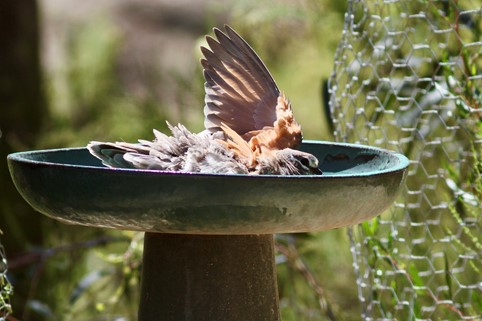
Female Common Bronzewing lying on its side and having a good soak in a bird bath (photo by Jane Rusden)
Jane Rusden
BirdLife Castlemaine District
Join us ‘Bird walk for beginners’ launch – 6 April 2022
Posted on 16 March, 2022 by Ivan
Come and help us celebrate the launch of our new brochure and bird walk, ‘Bird walk for beginners’, an easy walk along Leanganook Track and Forest Creek in Castlemaine VIC. The event and bird walk brochure aim to attract new birdwatchers, as well as celebrate the excellent restoration work that volunteers have achieved over the past few decades along Forest Creek. Bird walks are an ideal way to get people out enjoying and exploring the many natural assets we are blessed with here in central Victoria.
Bird watching is a great activity that almost everyone can enjoy, and this walk aims to increase the accessibility of bird walking in our region. We also feature a video of the walk presented by some engaging local bird enthusiasts, providing an in-depth view of the walk features for those less-abled or unable to visit the walk in-person. The COVID-19 lockdown period has seen a ten-fold increase in the number of new birdwatchers around the country, with a similar trend here in central Victoria. People are craving nature and the outdoors, prompting them to start their bird watching journey and enjoy the challenges of how to differentiate some of the trickier species.
Join us for a short, guided bird walk for all ages and abilities, and explore our new ‘Bird walk for beginners’ brochure, featuring QR codes to access bird and habitat information. The brochure launch event will feature a walk with local experts from BirdLife Castlemaine, Castlemaine Landcare Group and Castlemaine Field Naturalists Club, and will highlight the excellent volunteer work along this section of Forest Creek and Leanganook Track.
The walk is approximately 1.5 km long and is located along a gently graded, well-maintained walking path.
We will stop at eight sites along the bird walk, providing excellent opportunities to visit some great bird watching spots, with experienced mentors to guide you through the morning. Participants will have a chance to ask questions and learn directly from mentors, and scan the QR codes in the brochure to learn more about the birds at each site.
When: Wednesday 6 April 2022 at 11.00 am
Where: Leanganook Track, corner of Colles Rd and Murphy St, Castlemaine VIC. To view a google map link – click here
Bookings: Bookings are essential and tickets are limited. To book please – click here
This event is part of our ‘Birding for beginners’ project supported by the Victorian Government through Parks Victoria’s Volunteering Innovation Fund.
Please bring water and clothes for all weather to the walk, as you never know what autumn conditions may bring. All participants must adhere to health and safety requirements, including any current COVID-19 restrictions Please wear appropriate clothing and footwear and bring water and snacks, as well as binoculars if you have some. Connecting Country will provide some extra binoculars to share if needed.
Bird watching is one of the most enjoyable and satisfying ways to enjoy our natural heritage. Recording your bird observations also contributes valuable data for scientific research and informed conservation decisions. Birds are often our key connection to the landscape. They are prevalent in most environments and tell us much about our surroundings and environmental health. Central Victoria is considered a birding hotspot and they often prompt you to explore wonderful places that you never knew existed!
Connecting with the land: ‘Our arid bush paradise’
Posted on 10 March, 2022 by Ivan
Reconnecting with our local landscape has been a common theme over the past few years, especially during COVID-related lockdowns and restrictions. In many ways, we were left with little choice but to connect with places close to home, or in many cases, our own backyards.
Connecting with nature and our surrounding landscape has proved to be vital during times of stress, anxiety and uncertainty, and has proven links to mental health and feelings of belonging. Nature can generate a multitude of positive emotions, such as calmness, joy and creativity and can facilitate concentration.
We recently discovered a great blog post that does a lovely job of summarising the joys and challenges of connecting with our landscape, from a perspective of a landholder and farmer in the Mount Alexander region. The article was written by Katie Finlay at Harcourt Organic Food Co-op. Katie and Hugh’s farm has been part of several Connecting Country projects over the years, and provides an inspiring demonstration of sustainable land management.
Please enjoy Katie’s article below, courtesy of the Grow Great Fruit blog. To visit the blog – click here
Our arid bush paradise

We live in a pretty arid part of the world, but living through the COVID-19 era, we’ve come to appreciate our landscape in new ways.
We live on Dja Dja Wurrung land, on the side of the small but majestic Leanganook. That’s the Dja Dja Wurrung name for Mount Alexander, and it means ‘his teeth’. You can watch this short video to find out more about the significance of the name.
Our farm borders the Leanganook (Mount Alexander) Regional Park, so our backyard is pretty big.
We go for a lot of walks on the mountain, and it’s always spectacular and calming. During lockdowns, we (and everyone else) weren’t able to leave home, so we spent even more time than usual in the bush.
Sharing our backyard with you
If you live in the city or a regional town it can be hard enough at the best of times to get into wild nature.
We know from first-hand experience that being in the bush is incredibly good for the soul. Even though photos are a poor substitute for the actual smells, sounds, and feel of being in the bush, the least we can do is share our walks with you.
So, here’s a couple of our favourite trees we visit regularly.
They have a way of reducing us to instant insignificance on the planet and putting any niggling worries into perspective.
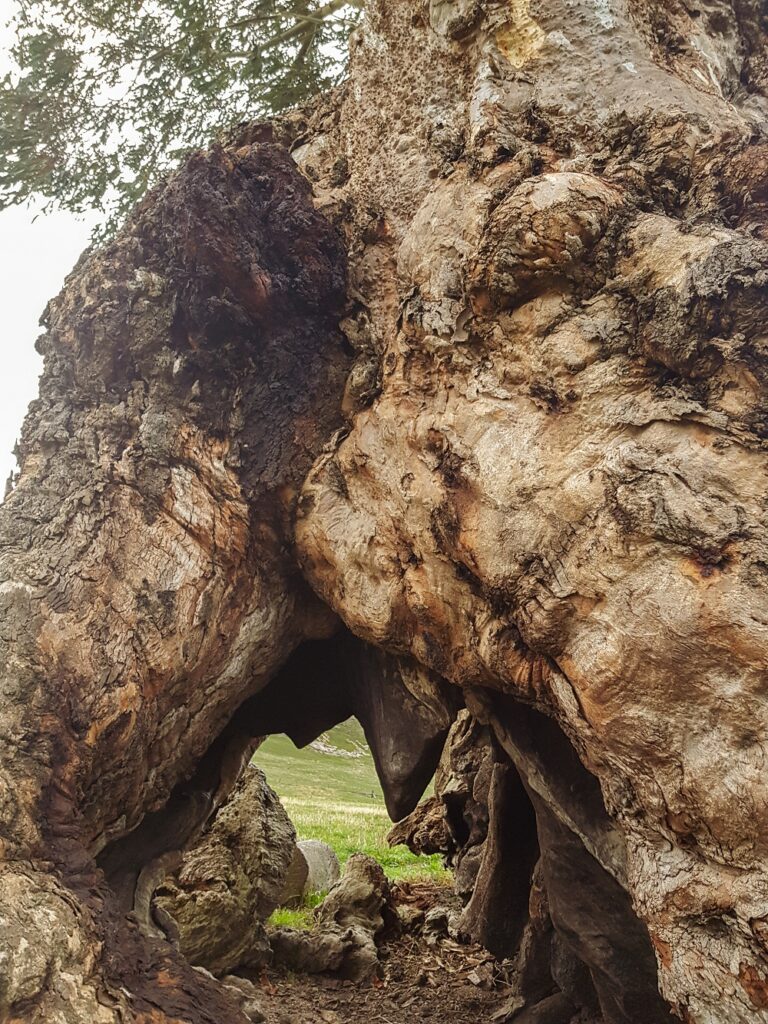
Just being in their presence makes us wonder how long these trees have been here.
Who have they sheltered? What storms have they weathered? Who (and what) has wandered past in the last couple of hundred years?
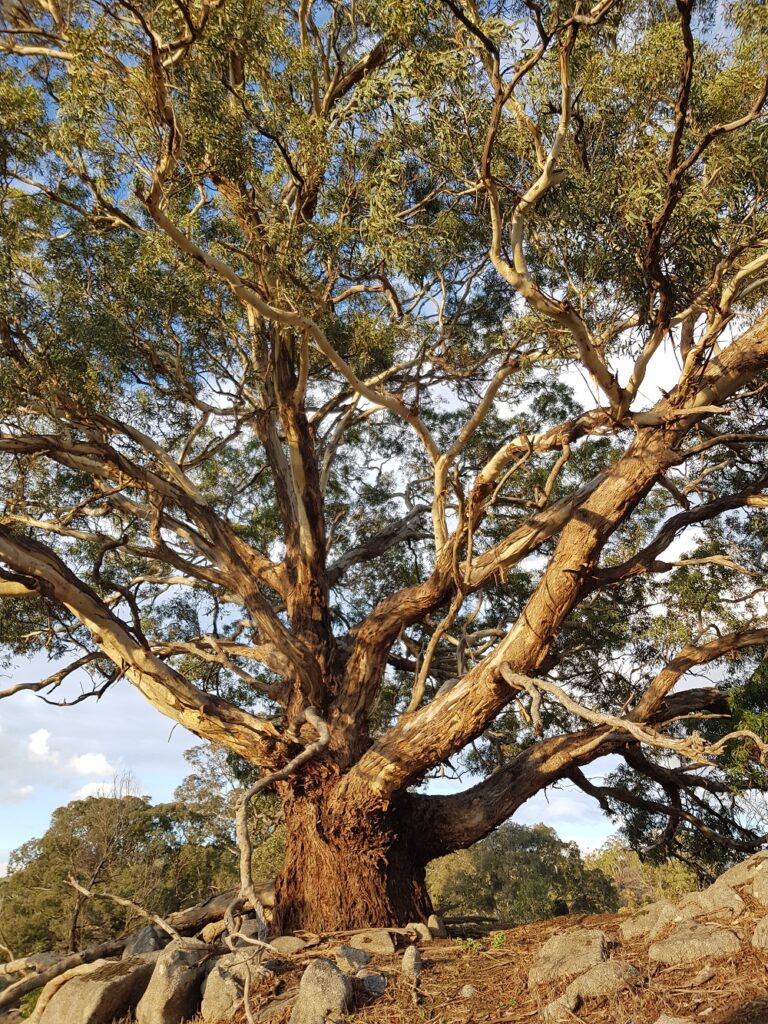
Granite bones
Our mountain is made of granite. Apart from providing the mineralisation that makes this region such a great place to grow fruit, it’s also a beautiful stone.
Granite stone formations can be huge, with lots of mysterious cracks and crevices. Granite doesn’t form caves as such, but it’s not at all unusual to find openings big enough to imagine someone or something seeking shelter inside at some time in history.
We always keep clear of the rocks. It feels like an invasion of privacy to poke about too closely, so we keep a respectful distance from their mysterious inner life.
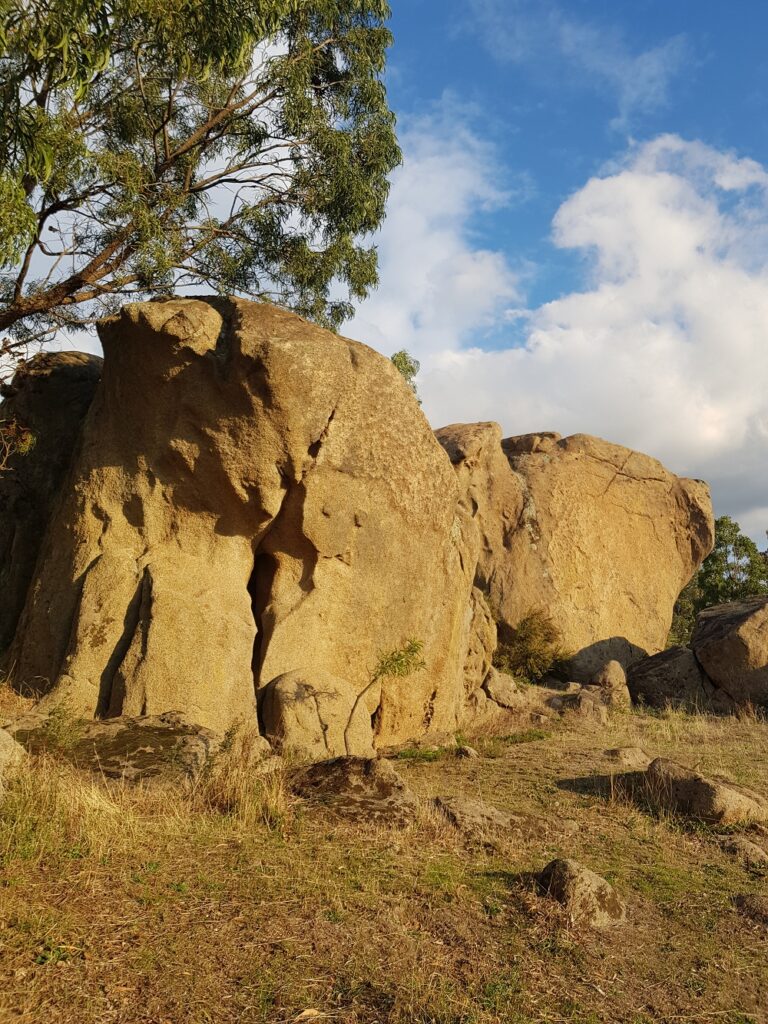
Things that shouldn’t be there
Less inspiring is the amount of feral and invasive flora and fauna we come across in walks on our beautiful mountain, like this herd of feral goats.
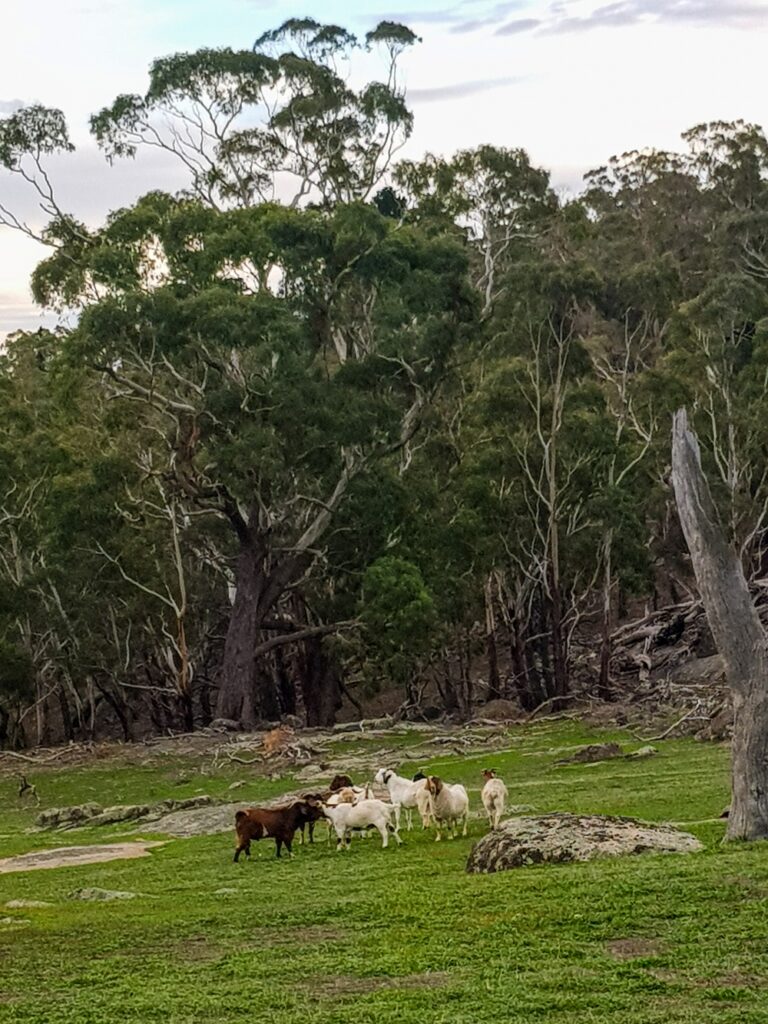
As beautiful and useful as goats are as animals, they need managing. They can even be quite good companions to fruit trees if they’re managed properly.
This lot has escaped from a farm somewhere (they have eartags) and taken up residence on the mountain. They go wherever they want, eat whatever they want, and seem to be breeding at an alarming rate.
This is a fragile and arid landscape, which has evolved with our native animals like kangaroos. While we’ve fenced to keep kangaroos off our farm (where they annoy us by competing for grass with the cows and damaging fruit trees), this is their land. They are perfectly evolved to live harmoniously here in the bush.
We kind of figure it’s up to us to exclude them from the farm, not try to get rid of them altogether, so kangaroo fencing is definitely the solution.
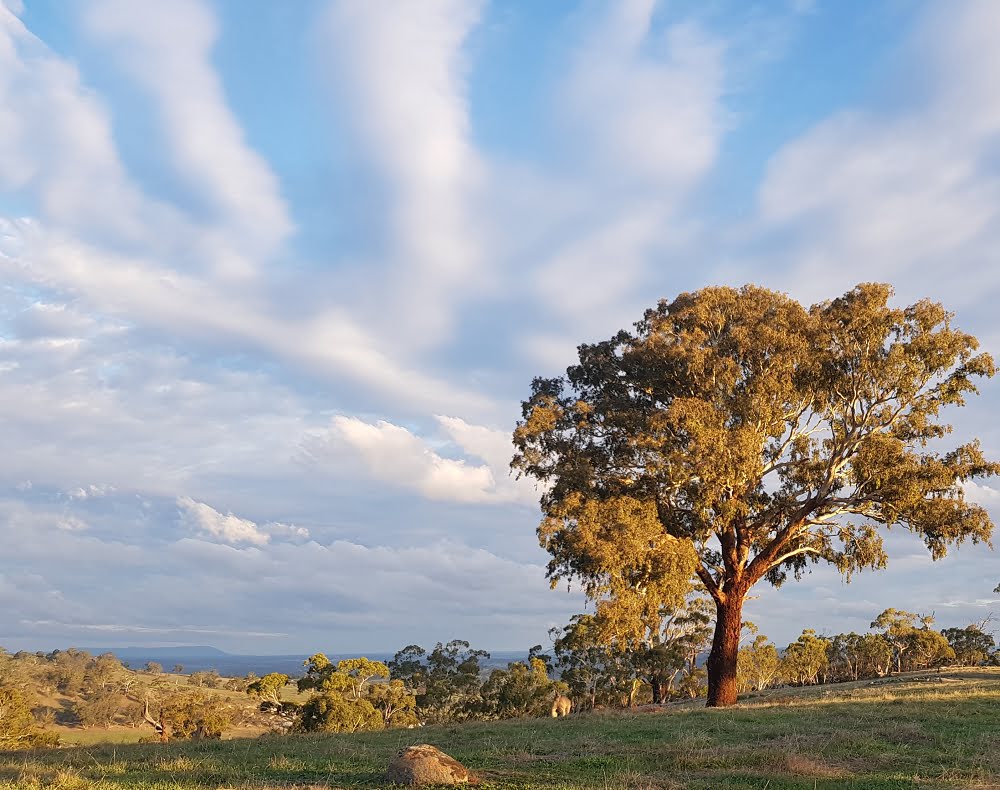
In the meantime, when we’re walking in their patch, we’re perfectly happy to admire them from a distance, and let them be!
Katie Finlay
Grow Great Fruit
Healthy Landscapes guide – purchase a copy now
Posted on 10 March, 2022 by Ivan
We are excited to announce that we have now sold over 120 copies of our Healthy Landscapes guide. If you don’t have one yet, be sure to get your copy before the first print run sells out! They are a bargain at just $15 and perfect for people new to the region, or anyone who wants to learn more about how to protect and restore habitat for our local wildlife. Proceeds allow us to cover printing and administration costs, and support our work.
Here’s just some of the feedback:
- I was in Castlemaine today and suddenly remembered this item about the book being available at Stonemans. They had it at the front desk and we are reading it now back at home. It is really outstanding and very relevant. Thanks to Connecting Country for their dedication. (Welshmans Reef landholder)
- Sensational! A must-read for anyone with a property from 1 to 1,000 acres. (Yapeen landholder/farmer)
- I wish we’d had this guide when I first moved here 25 years ago. (Golden Point landholder)
- Wow, what a fabulous publication. It covers all bases and is an essential read for all landowners. It has particular relevance for anyone doing due diligence before purchasing rural acreage, however big or small. (Walmer landholder)
For more information about the Healthy Landscapes guide – click here
Copies are now on sale – when COVID-19 related restrictions allow.

To get your copy ($15) head to:
Mount Alexander Animal Welfare (MAAW) Op Shop
12 Johnstone St, Castlemaine VIC
For shop information and opening hours – click here
Castlemaine Visitor Information Centre
44 Mostyn St, Castlemaine VIC
For centre information – click here
Stoneman’s Bookroom
101 Mostyn St, Castlemaine VIC
For shop information – click here
The Book Wolf
1/26 High St, Maldon VIC
For shop information – click here
Castlemaine Vintage Bazaar
The Mill, 1-9 Walker St Castlemaine, VIC
For shop information and hours – click here
A copy of the guide has been made available free of charge to each local Landcare and environmental volunteering group in the Mount Alexander region. This project is made possible through support from the Department of Agriculture, Water and the Environment, through funding from Australian Government’s National Landcare Program.
Clean Up Australia Day – Sunday 6 March 2022
Posted on 3 March, 2022 by Ivan
Clean Up Australia is happening this Sunday 6 March 2022, including eight locations across the Mount Alexander region. Clean Up Australia inspires and empowers communities to clean up, fix up and conserve our environment. What was started 31 years ago, by an ‘average Australian bloke’ who had a simple idea to make a difference in his own backyard, has now become the nation’s largest community-based environmental event.
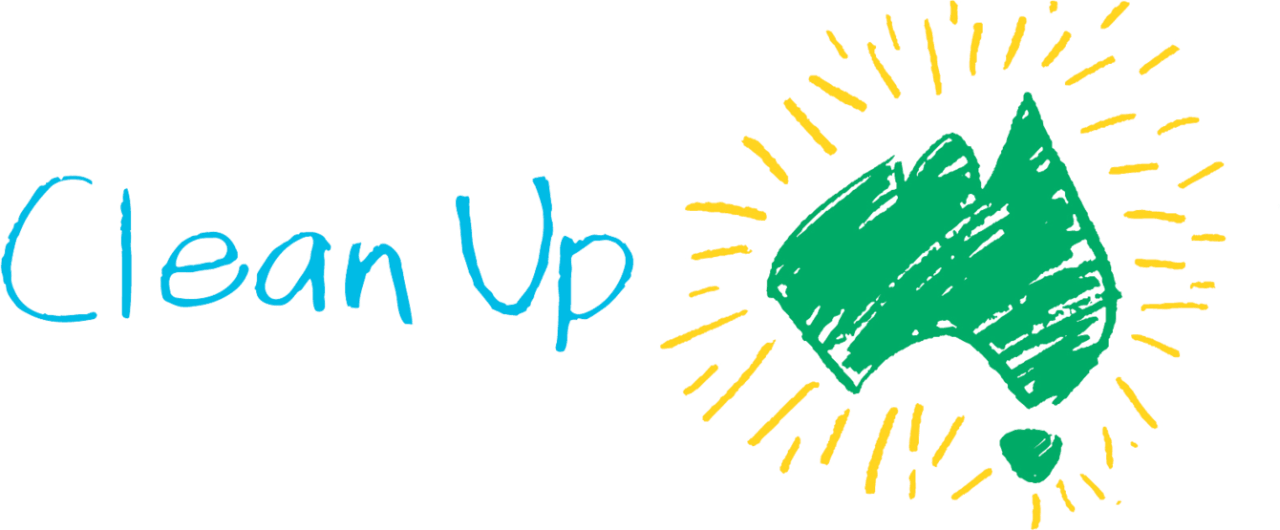
Local Clean Up Australia Day working bees on Sunday 6 March include:
- Friends of Campbells Creek Landcare – Meet at Winters Flat footbridge from 8.00 to 10.00 am. For more information – click here
- Golden Point Landcare – Expedition Pass Reservoir from 10.00 am to 12.00 noon. Bring gloves, bags provided. For more information contact Jen Pryce (ph: 0423900 590).
- Sutton Grange Landcare Group – Meet at Sutton Grange Hall at 9.00 am. For more information contact Zane Tronson (ph: 0410 597 485).
To view a map of Clean Up Australia Day working bees across the country, allowing you to search via postcodes and townships – click here

Rubbish dumped at Muckleford Bushland Reserve (photo by Muckleford Catchment Landcare Group)
Tiny houses for Tuans: Seeking YOUR help to combat a wildlife housing crisis
Posted on 2 March, 2022 by Jess
We all know how difficult it can be to secure housing in (or around) Castlemaine right now! But did you know it’s not just people facing a housing crisis in the Mount Alexander area? Many native birds and mammals need tree hollows as homes to protect them from predators and raise their families.
Missing tree hollows
The Mount Alexander region of central Victoria has a long history of removing large old trees with hollows for gold mining, agriculture, and timber and firewood harvesting, leading to a housing crisis for our wildlife. In Australia, it can take hundreds of years for trees to form natural hollows. Due to the profound environmental change caused by European colonisation and the gold rush, many trees in our region are still young. Regrowth and revegetation are great, but they can’t readily replace the number and types of tree hollows that our wildlife desperately need to survive.
The Brush-tailed Phascogale
The Tuan (also known as the Brush-tailed Phascogale) is a very cute hollow-dependent marsupial carnivore that can easily be identified by its characteristic black brushy tail. Phascogales eat mainly invertebrates, and forage for food on and under the bark of trees, on logs, and in leaf litter on the ground. They have an extraordinary life history – all males die from stress following their first breeding season before they reach one year of age. This threatened species is in decline in Victoria and has undergone substantial range contractions and regional extinctions. Key threats include predation by cats and foxes, climate change and drought, habitat removal and degradation, and the extensive loss of trees with hollows. Recent research has highlighted that the Mount Alexander region is a stronghold for tuans and is important for the future conservation of this species.
Our nest box program
In 2010, Connecting Country installed 450 high-quality, specially-designed phascogale nest boxes (effectively, ‘tiny houses’) across 150 sites in the Mount Alexander region. We have an amazing team of skilled, hardworking volunteers who now monitor at least a subset (300) of these nest boxes frequently. Monitoring results indicate that small native marsupials perceive our nest boxes as valuable to provide shelter from predators and to rear their young. At least 150 nest boxes (35%) have had evidence of use by tuans. Another native animal, Krefft’s glider (formerly known as the Sugar Glider) uses our nest boxes too – nearly 90% of our nest boxes have been used by this species at some stage since 2010. Our monitoring program is robust. Thanks to a collaboration with scientists from La Trobe University, the results of our study were recently accepted for publication in the international scientific journal Wildlife Research.
We purchase high-quality nest boxes from Wildlife Nestboxes, a local business based in Castlemaine. These are thoughtfully designed: made with high-quality plywood, a sloping roof to keep the rain out, and have an entrance that is just large enough for a tuan to use, while keeping predators out.
Nest box maintenance
Unlike natural tree hollows, nest boxes typically have a shorter useful life of 5-20 years. They are exposed to the elements, and inevitably degrade and need replacing and maintenance over time. During our last survey in autumn 2021, 96 nest boxes required maintenance of some kind. Several volunteers raised concerns about this and expressed enthusiasm to replace or repair nest boxes, with one volunteer commenting: ‘it just makes me so sad to think that all these nest boxes are not able to be used by phascogales’. Based on expert advice, the most efficient and safe approach is to swap broken nest boxes with a new one on-site, then repair broken nest boxes (where possible) at a workshop at a later date. The repaired nest boxes can then be re-installed when another box eventually degrades.
Nest box monitoring 2022
In partnership with our volunteers, private landholders and Landcare groups, and thanks to a generous grant from the WIRES national grant program, volunteers will monitor nest box sites again in autumn 2022. This provides an ideal opportunity for us to replace broken nest boxes. We are very grateful to landholders and Landcare groups involved in the program who allow site access, to our volunteers for contributing their expertise and time to monitoring our nest boxes. We also acknowledge WIRES for providing funding to help us keep our volunteers safe, well-equipped and supported, and carefully collate and report on our data. We are extremely proud of this project, and this year, we believe a small additional investment will go a long way to provide homes for wildlife.
We are reaching out to our community for support to purchase new nest boxes and provide new, safe, tiny houses for Tuans.
Buy a nest box to provide ‘Tiny houses for Tuans’
Donating to our ‘Tiny Houses for Tuans’ campaign provides excellent value for your investment:
- 100% of funds donated to this project will be spent directly on nest boxes and their installation – providing a brand-new, high-quality, tiny home for a marsupial. We already have the resources to manage the project and install the nest boxes.
- One high-quality nest box costs $100, and we are seeking a total of $6, 000 to replace 60 broken nest boxes. Any additional donations will be used to repair broken nest boxes, and to replace nest boxes that wear out in future.
- Nest boxes will be installed by volunteers at the same time as they are visiting the sites for monitoring, making this a highly-efficient project.
- As we are purchasing from Wildlife Nestboxes, funds will support a local small business.
- Replacing broken nest boxes will bring joy to project participants: skilled volunteers, landholders, associated Landcare groups, and staff, many of whom care deeply about phascogales and their conservation.
- Our 12 year track record demonstrates the value of nest boxes in providing supplementary habitat and a monitoring tool.
Donate today via our Give Now page – click here
We have a secure only payment system and all donations (>$2) to Connecting Country are tax deductible.
Can’t donate? Here are some other ways you can help threatened tuans:
- Keep pets, especially cats (known predators of phascogales), indoors at night when tuans are active
- Retain leaf litter, logs, and trees (especially mature trees) on your property, as these provide foraging and den resources for tuans
- Provide your own ‘Tiny Houses’ – consider installing nest boxes on your property
- Contribute to restoring healthy forests by joining your local Landcare or Friends group. To find a group – click here
- Consider volunteering on Connecting Country’s monitoring project (next surveys in autumn 2022) – email jess@connectingcountry.org.au to register your interest
- Share our campaign with your friends and networks.
‘Nature in Time’ exhibition at Newstead
Posted on 23 February, 2022 by Frances
Take a closer look! Visit a new exhibition at Newstead Arts Hub during March 2022.
Some moments pass too quickly, some things are too small for the eye to catch, some too ‘ordinary’ to be noticed. Photography helps us fix them in the mind, invites us to feel their unique weight and hold the memory.
Local photographers Patrick Kavanagh, Bronwyn Silver, Bernard Slattery and David Tatnall invite us to redirect our gaze at the ordinary and the fleeting in the Box-Ironbark region.
Patrick Kavanagh says ‘I am so often amazed and moved by the natural wonders that surround me … the vastness of the night sky shown in this image … with my camera, I try to hold onto some of these extraordinary glimpses and share them.’
The Nature in Time photographers invite you to come to the Arts Hub and take a closer look!
When: 10 am to 5 pm Saturdays and Sundays from 5-27 March 2022, plus Monday 14 March 2022
Where: Newstead Arts Hub, 8A Tivey Street, Newstead, VIC
For more information – click here
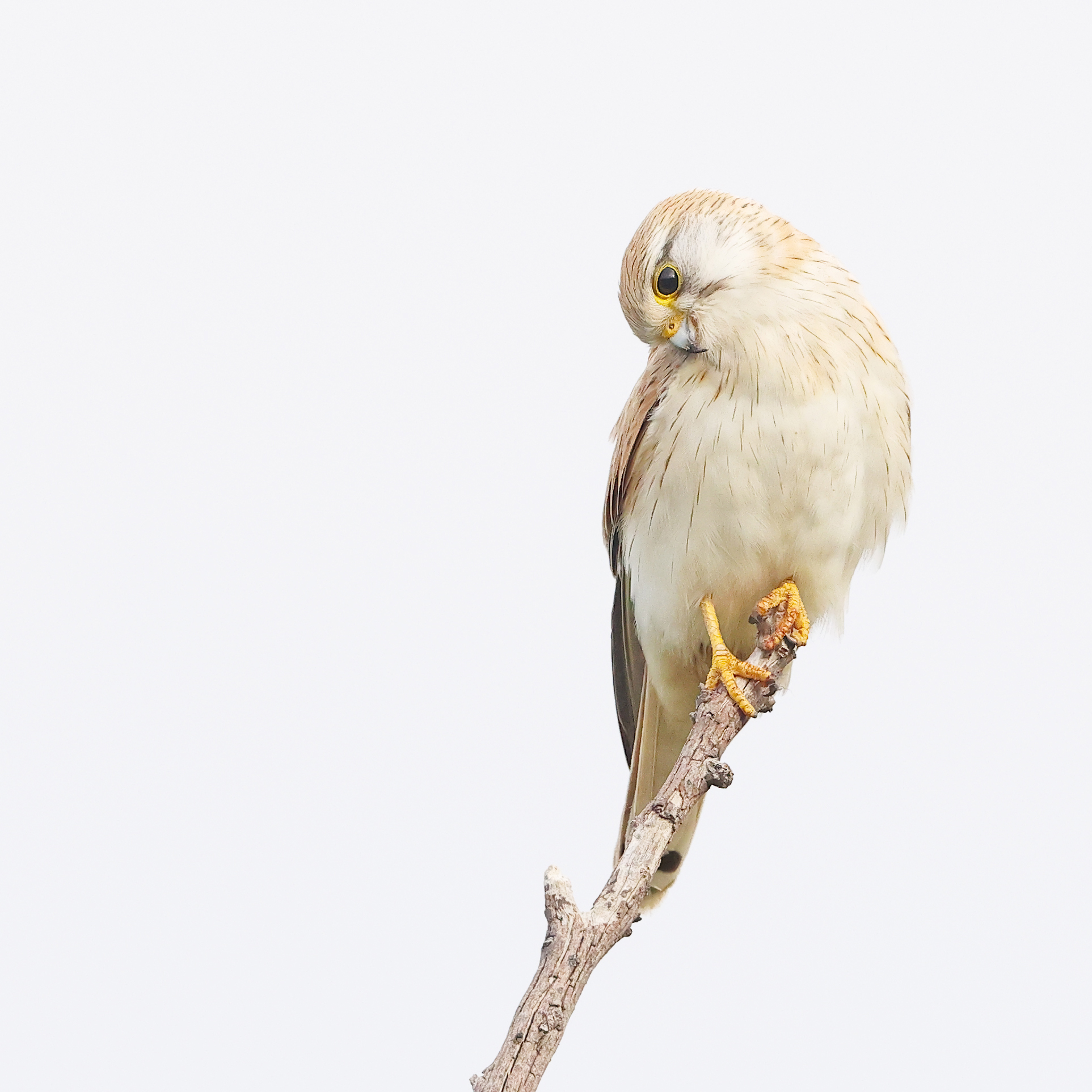
Nankeen Kestrel by Patrick Kavanagh
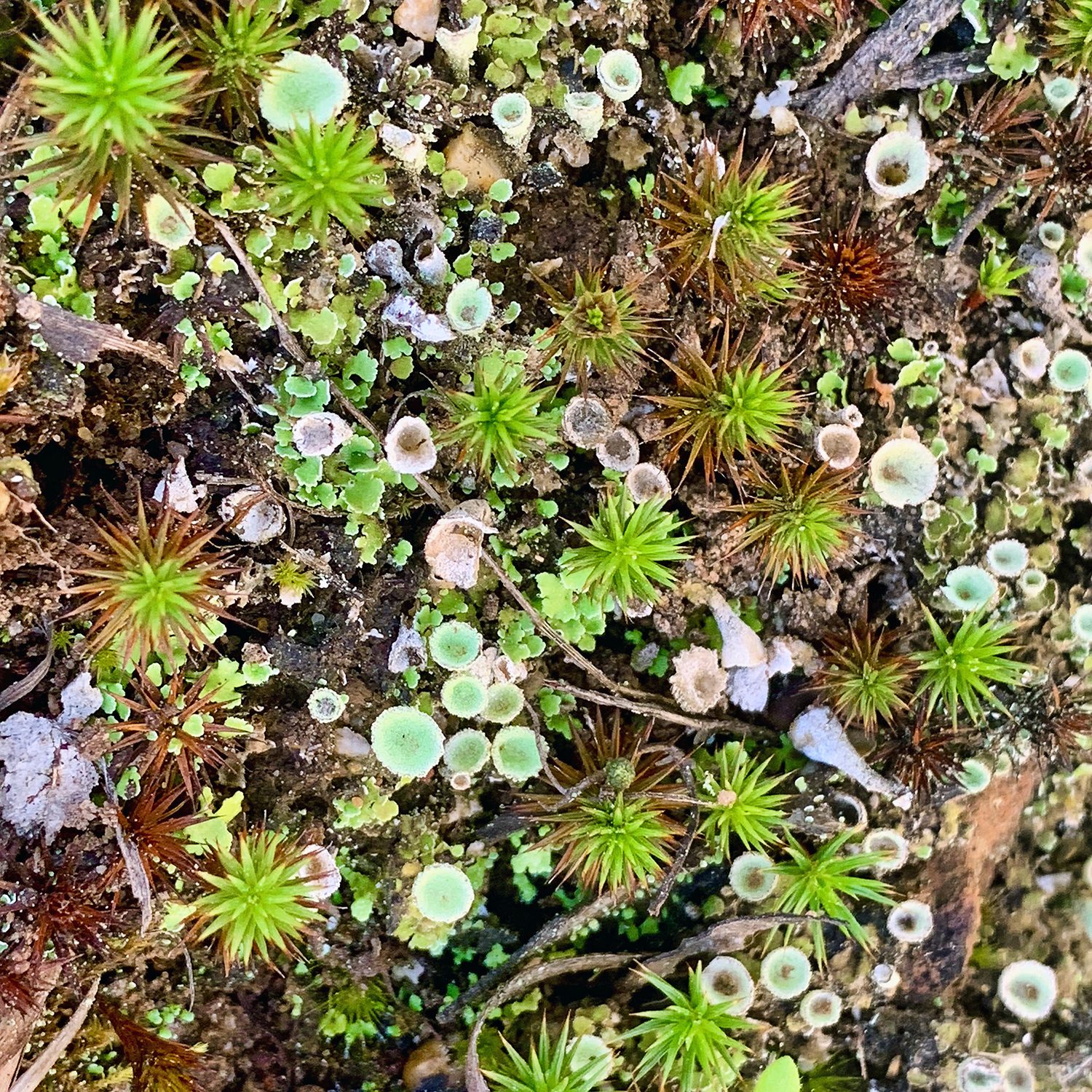
Forest floor by Bronwyn Silver
Benefits of ecological burns webinar – 8 March 2022
Posted on 22 February, 2022 by Ivan
We recently discovered a useful upcoming event on the topic of planned ecological burns. Ecological planned burning is a land management tool applied to promote positive benefits for a local environment and certainly has its place in sustainable land management, if implemented with skill and knowledge.
This online event is on Tuesday 8 March 2022 from 7 pm. Please read on for further details, courtesy of the Macedon Ranges Shire Council.
Ecological burns aim to bolster growth in native plant species and prevent serious bushfires (photo: ABC News)
Ecological burns – the benefits
These benefits include stimulating dormant seed banks in the soil profile, reducing the vigour or eliminating weeds, nutrient cycling and the removal of biomass….all of which promote biodiversity and ecosystem health. There are a range of factors that influence when and how an ecological planned burn can be conducted but essential to the process is a clear understanding of what you are trying to achieve and how to moderate fire behaviour and extent.
The talk will explore how ecological burning is undertaken in Local Government and how this can be applied to other contexts.
Zoom details will be sent to you prior to the webinar. To register – click here
The Healthy Landscapes project
The Healthy Landscapes: Practical Regenerative Agricultural Communities program aims to raise awareness in their community about sustainable land management practices that improve soil health, reduce exposure to climate risk, enhance biodiversity and increase on-farm productivity.
This program is being delivered as a partnership between Macedon Ranges Shire Council, Hepburn Shire Council, the City of Greater Bendigo, A Healthy Coliban Catchment project (North Central Catchment Management Authority and Coliban Water), Melbourne Water and the Upper Campaspe Landcare Network.
To register for the webinar: click here
Cost: free
Contact: Martin Roberts (mroberts@mrsc.vic.gov.au)
Who’s in that nest box? WIRES fund our 2022 nest box monitoring
Posted on 2 February, 2022 by Jess
Connecting Country is thrilled to announce new funding support from WIRES, allowing us to monitor nest boxes in autumn 2022!
The Brush-tailed Phascogale is a carnivorous, hollow-dependent marsupial distinguished by its bushy tail. Once widespread through central Victoria, it is now a threatened species due to a serious decline in range and population. Our region’s forests are heavily degraded following a long history of disturbance by gold mining, wood cutting and clearing. Large old trees with hollows that provide essential shelter for phascogales are now scarce. However, recent research yielded surprising results, revealing our region is a stronghold for this species and important for its future survival.
In 2010-11 Connecting Country installed 450 phascogale nest boxes across the Mount Alexander region of central Victoria, aiming to provide shelter for phascogales and gain a better understanding of phascogale distribution and habitat preferences. As of 2021, 62% of our nest box sites have showed evidence of phascogale use, indicating nest boxes are a valuable resource in providing protection from predators and a place for phascogales to raise their young.
Long-term rigorous scientific monitoring is essential to understand the phascogale’s current status and conservation needs. At Connecting Country, engaging community is also central to successful wildlife conservation. Initially we planned to monitor nest boxes annually, but due to funding limitations, we monitored nest boxes every couple of years between 2011-2018. In 2018 and 2021, our nest boxes were monitored by volunteers. We are very grateful for the support and hard work of our dedicated volunteers.
In our experience, citizen science projects (like nest box monitoring) work best when overseen by a funded coordinator to ensure they run smoothly. Connecting Country’s Engagement Coordinator helps keep our volunteers engaged, trained, equipped, safe and supported to collect good-quality data. With modest funding support we are able to collate records and check data carefully, and report back to landholders in a timely manner.
This is why we are thrilled to announce new funding from WIRES for nest box monitoring in 2022. WIRES (NSW Wildlife Information, Rescue and Education Service Inc.) is Australia’s largest wildlife rescue organisation.
In partnership with our volunteers, private landholders and Landcare groups, and thanks to a generous grant from the WIRES national grant program, we are pleased to confirm we can support volunteers to monitor nest box sites again in autumn 2022. The ‘Who’s in that Nest Box?’ project will provide logistical support to a team of skilled and enthusiastic volunteers to monitor phascogales. It provides volunteers with the training, equipment, and logistical support they need to monitor nest boxes safely and accurately. Thanks to this funding, we can coordinate data entry, reporting findings back to the community and share data via public databases, build closer relationships between citizen scientists, researchers, community groups and land managers. We hope this project will also inspire broader community involvement in phascogale preservation.
We are very grateful to landholders and Landcare groups involved in the program who allow site access, and of course, to our volunteers for contributing their expertise and time to monitoring our nest boxes. We can’t wait to work with you all again soon!
Bird of the month: Yellow-tufted Honeyeater
Posted on 24 January, 2022 by Ivan
Welcome to our twenty-first Bird of the month, a partnership between Connecting Country and BirdLife Castlemaine District. Each month we’re taking a close look at one special local bird species. We’re excited to join forces to deliver you a different bird each month, seasonally adjusted, and welcome suggestions from the community. We are lucky to have the brilliant Damian Kelly share his writing and photographs with us this month, with assistance from the talented and charismatic Jane Rusden from BirdLife Castlemaine District.
Yellow-tufted Honeyeater (Lichenostomus melanops)
The effects of El Nina are very evident this year, with bird species populations increasing in line with their food sources. However moist gullies always play a significant role in the often dry Central Victorian Box-Ironbark forest due to higher nutrient and moisture levels, which means more food for wildlife. Birds such as the Yellow-tufted Honeyeater prefer these more productive gullies, particularly at drier times of the year, moving relatively short distances in response to food availability.

Yellow-tufted Honeyeaters usually forage in the canopy, plucking insects and other invertebrates from among the foliage, or taking the sugary manna that oozes from the branches (photo by Damian Kelly)
Chris Tzaros’s excellent book ‘Wildlife of the Box-Ironbark Country’ describes how Yellow-tufted Honeyeaters use both the canopy and the shrub layers of Box-Ironbark forest. Insects are gleaned from canopy foliage, bark and tree trunks, or sallied after and taken from the air. Trees are also used to forage for lerp, manna, honeydew and nectar, which is also consumed from mid and low story shrubs such as heath including Cat’s Claw Grevillea.
Nesting sites are found often quite close to the ground in species such as Gold-dust Wattle and Drooping Cassinia. I’ve seen nests hanging hidden in low hanging Box leaves and low shrubs in Rise and Shine Bushland Reserve (Sandon VIC), where they are quite abundant. The nests are suspended cups woven from grass, bark, wool or moss, and spiders’ web. Two or three eggs are laid, but on occasion, they can be parasitised by Fan-tailed, Pallid and Shining-Bronze Cuckoos.

The Yellow-tufted Honeyeater is much brighter and more conspicuous than other honeyeaters that inhabit our region (photo by Damian Kelly)
To hear the call of a Yellow-tufted Honeyeater, please – click here
Damian Kelly
Jane Rusden
BirdLife Castlemaine District
The magic of fairy-wrens – a quiz!
Posted on 17 January, 2022 by Frances
Superb, splendid, and downright lovely. These chipper little songbirds flit and flirt their way through our gardens and parks. You will often seem them prancing around the forest floor or in open spaces, looking for insects and showing off their superb colors.
Fairy-wrens have probably landed a spot in your heart, but how much do you know about these spectacular birds? Add some fairy magic to your day with this fun quiz published by the Australian Broadcasting Commission (ABC).
To do the ABC fairy-wren quiz – click here
Here in central Victoria, we often come across the gorgeous Superb Fairy-wren in our forests and gardens. Thank you to local photographer Ash Vigus for this stunning image.
To learn more about the fascinating Superb Fairy-wren, read our ‘Bird of the month’ post by Jane Rusden – click here








